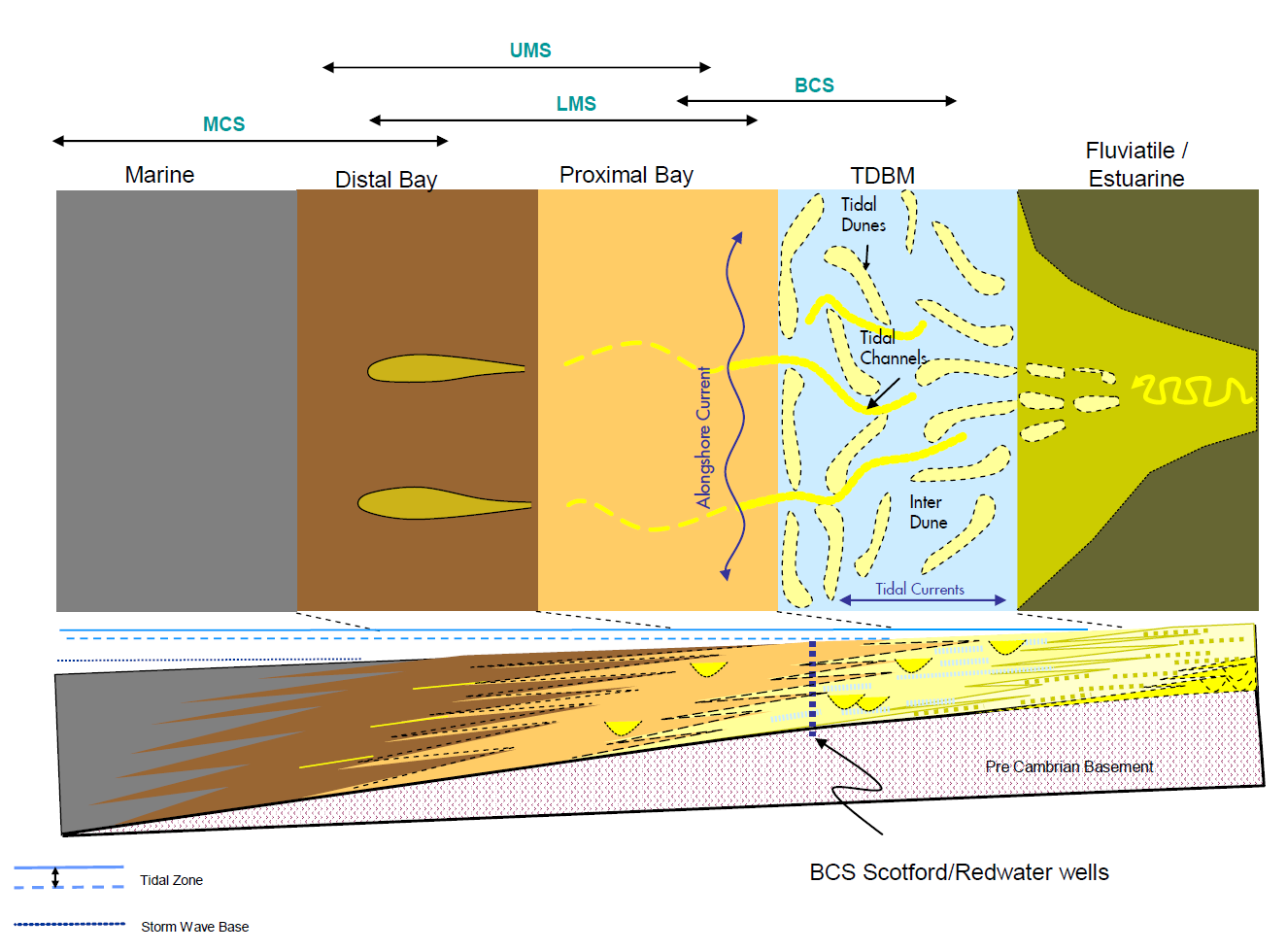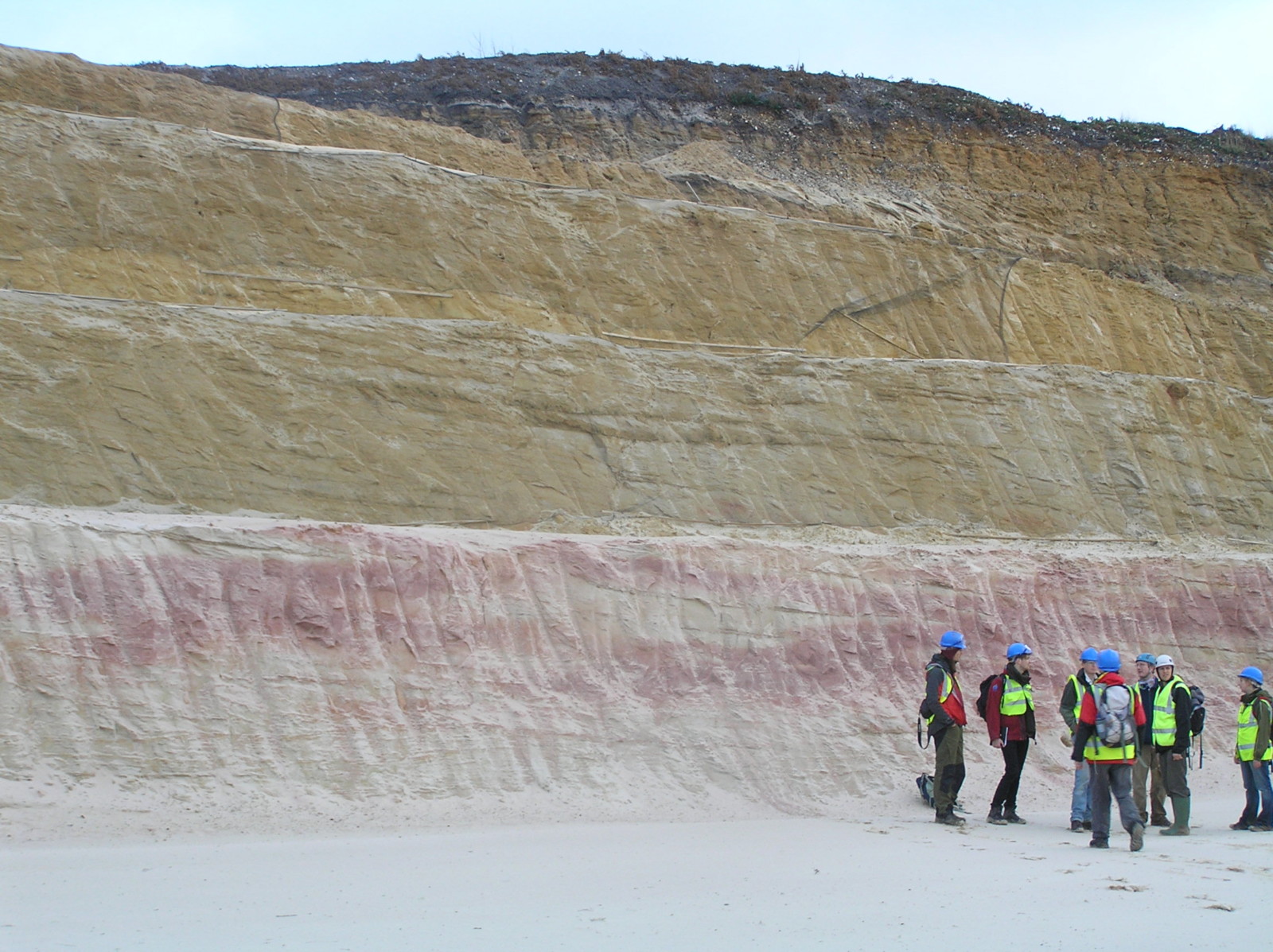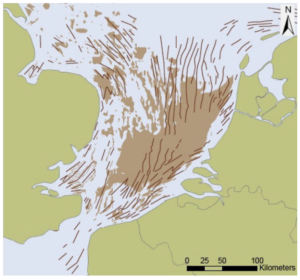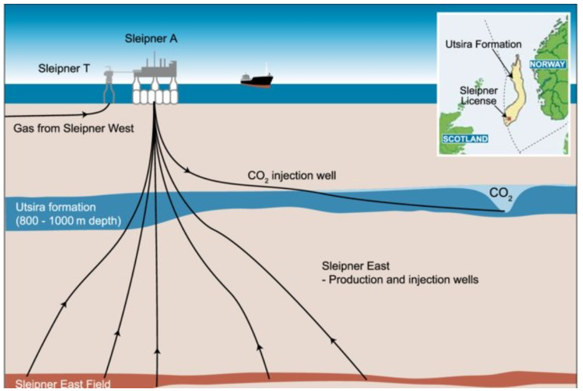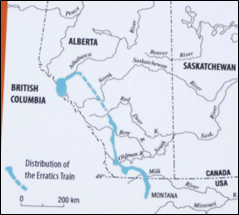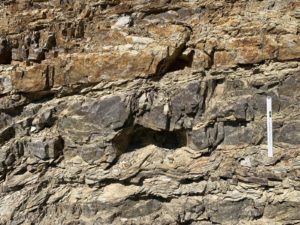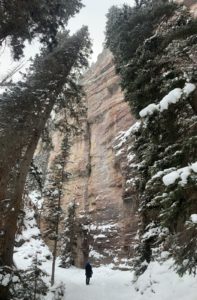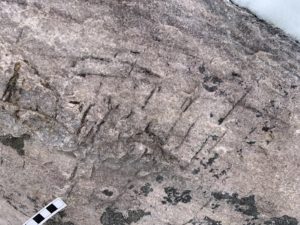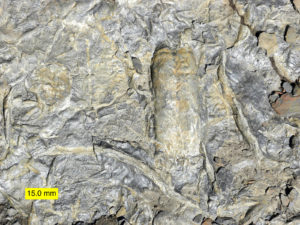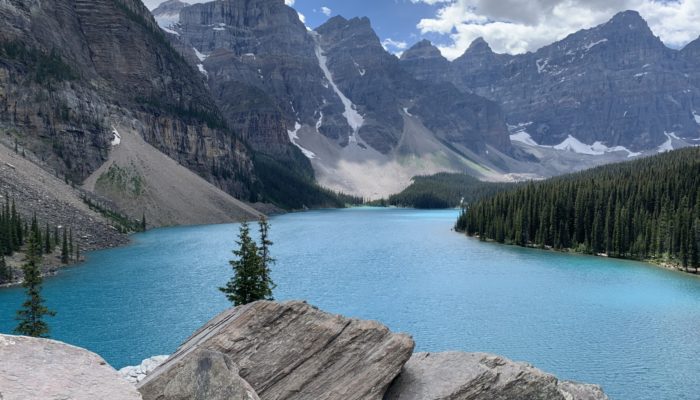
Introduction
In 2022 I was asked to put together a virtual field trip looking at carbon sequestration (CCS). We are particularly lucky in Alberta in having three excellent Cambrian targets for CCS including the Basal Cambrian Sandstone, currently being used for CCS in Shell’s QUEST project, quartzites of the Deadwood Formation (being utilized for a CCS project in Saskatchewan) and the Gog Quartzite, an analogue and potential target. The Gog outcrops across the Rocky Mountains close to my home in Calgary, so in today’s blog we will focus in on this interval and use it to introduce some of the important concepts relating to CCS.
Carbon Sequestration: a primer
There are four methods for sequestering CO2:
- Structural and stratigraphic trapping – our focus today
- Residual gas trapping, the process in which CO2 bubbles are left trapped in the pores of the rock as CO2 and water flows through the reservoir (e.g., by buoyancy forces) and water in-fills the pores previously occupied by CO2
- Solubility trapping, the process in which CO2 dissolves into the saline water or brine in the reservoir rock
- Mineral trapping, which occurs as CO2 dissolved in the native water reacts with minerals and other dissolved constituents to form new carbonate minerals
We will be focusing on the first of these, structural and stratigraphic trapping. These methods require the following elements, all of which we can examine in the Gog Quartzite:
- A thick, laterally extensive reservoir
- Burial depth of 1 to 4 km to ensure that CO2 is supercritical (semi fluid), making it easier to inject. This is very important to ensure a successful outcome
- Sufficient reservoir properties to make injection possible: porosity 5 to 7% and perm 10 to 50 mD
- An excellent top seal
- Tectonically quiescent conditions
Existing projects: QUEST Project (Shell)
This carbon sequestration project is located NE of Edmonton and, since 2015, has captured up to 1.2 million tonnes of CO2 per year. The gas is injected in semi liquid form into the Basal Cambrian Sandstone (BCS) at 2100 m depth, with the Prairie Evaporite as a seal, preventing the gas from escaping.
The Basal Sandstone records a major transgression (relative sea level rise) in the Lloydminster Embayment around 525 million years ago. Five main depositional environments are recognized: (1) Fluvio-influenced tide-dominated bay margin; (2) Tide dominated bay margin; (3) Proximal bay, (4) Distal bay and (5) Offshore. These are shown in the Figure to right. The Basal Sandstone was deposited in these environments, leading to a variety of reservoir properties.
Results so far show minimal leakage, thermal effects, or impact of a flowing aquifer. The reservoir properties show widespread but relatively thin (typically < 100 m) sheet-like geometries of the quartzite reservoir; extreme textural and mineralogical maturity; and a pronounced lack of clay to silt-sized sediments. Informal estimates suggest that the injection front is moving forward at about 25 m per year.
Analogues: ancient and modern
There are many other Cambrian quartzites around the world, including the sediments making up Table Mountain, in Cape Town, South Africa; the Pipe Rock in Assynt, Scotland and Cambrian quartzites exposed in Shandong, China. However, the most useful analogue, the Gog Quartzite, outcrops at many localities in the Rocky Mountains, several of which will be discussed and presented here. There are also many younger analogues, including Cretaceous deposits (150 to 65 million years old) such as the Greensand of Leighton Buzzard, UK.
Recent analogues include the Bay of Fundy, with its high tidal range and similar tidal sandstones of the North Sea, UK. Both have compound dune fields which are very similar to the CCS reservoirs of the Basal Cambrian Sandstone. Another set of dune fields can be found in the San Francisco Strait. All of these settings have strong currents which help to winnow out fines, leaving clean sands with high reservoir potential.
- North Sea tidal sand ridges
- Sand ridges in San Francisco Bay
Important elements for successful CCS
In addition to a clean, porous and permeable reservoir, other factors that are important include the need for seals, such as mudstones. Even better are evaporites such as salts or gypsum, which are relatively impervious. Gentle folding can help to build a trap, but too much tectonic activity can create vertical open fractures, leading to a risk of seepage. A thick top seal will reduce this risk. Individual reservoir-seal pairs can also help to sequester CO2 in individual sandstone beds, interbedded with mudstones.
The Gog Quartzite – a virtual field trip
I am using a few short videos shot in the field that give an idea of what the subsurface CCS reservoirs look like when exposed at surface.
The first video is an introductory short that shows glacial erratics at Okotoks, Alberta composed of Gog Quartzite. These make up part of a chain of boulders (the Foothills Erratics Chain) extending for 930 km from the Jasper area to the north, and as far as Montana to the south. This outcrop is known as Big Rock. My daughter provides a (very active!) scale.
The trough cross-stratified quartzite, making up the boulders, is thought to have been deposited as bars on the sea floor, with the sandy sediment possibly being transported by longshore drift. The sandstone beds have then been strongly heated while buried at significant depths. This has metamorphosed the sandstone into a glassy quartzite. They were later thrusted upward by several thousand metres to form part of the Rocky Mountains. This is thought to have happened between 150 and 50 million years ago.
The Big Rock may originally have been part of Mount Edith Cavell in Jasper National Park. A rockslide, around 12 to 17,00 years ago, is thought to have liberated it from the mountain, depositing the quartzite blocks on top of a valley glacier. The blocks were then carried eastward from the Athabasca River Valley by this glacier, later colliding with the westward moving ice streams of the Laurentide ice sheet. The blocks, which suffered little erosion, were then transported hundreds of kilometres southward as a medial moraine.
The second video introduces the Gog Quartzite, discussing its deposition on the western passive margin of Laurentia around 520 million years ago. The Gog is up to 2 km in thickness and has a very high net:gross. It is dominated by tidal to shallow marine sandstone deposits.
The third and fourth videos examine two outcrops of the Gog Quartzite located just east of Sink Lake, Alberta, fairly close to Lake Louise. At least 80 m of the Gog is exposed at the first stop, with mostly 30 to 150 cm thick, trough cross-bedded quartzite beds, usually stacked but sometimes separated by thin mudstone beds. There are also rippled intervals and several horizons with dewatering.
The images below show interbedded trough cross-bedded quartzite and mudstone beds; wave ripples; and dewatering structures.
- Trough cross-bedded quartzite interbedded with mudstone beds
- Wave ripples in the Gog
- Dewatering structures
The fourth video also explores the trace fossil assemblages, showing Arenicolites in loose blocks of Gog Quartzite at Lake Louise. Similar blocks can be found all the way along the Bow River to Calgary (a distance of more than 150 km) and beyond. Arenicolites is a burrow left by marine lug worms, usually found in beach ands very shallow marine settings.
Outcrops at Lake Louise
 The area around the iconic Lake Louise is comprised primarily of Cambrian deposits. The mountain ridges on the west side of the lake include the Gog Quartzite, while cliff exposures make for great climbing as well as exposing some wonderful sedimentary structures. These include small, contorted slumps and trough cross-beds (see first two photos below).
The area around the iconic Lake Louise is comprised primarily of Cambrian deposits. The mountain ridges on the west side of the lake include the Gog Quartzite, while cliff exposures make for great climbing as well as exposing some wonderful sedimentary structures. These include small, contorted slumps and trough cross-beds (see first two photos below).
Trace fossils can also be found in situ in the Gog Quartzite at Lake Louise, including Skolithos. These vertical burrows form what is colloquially known as pipe rock (see photo at top right below), and characterize beach and shallow marine, high energy deposits. The burrows often act as conduits for groundwater or other fluids. Trilobite burrows and resting traces can also be found at Lake Louise (bottom two images below).
- Beautiful outcrop of Gig Quartzite at Lake Louise, popular with climbers
- Trough cross-beds, ripples and a small slump at the top of picture
- Pipe rock formed by Skolithos burrows (actually vertical)
- Trilobite burrows
- Rusophycus (trilobite resting trace) from lake Louise
Summary
The Gog Quartzite provides a very three-dimensional window into the subsurface carbon sequestration reservoirs of Alberta and Saskatchewan. They also allow us to examine the sedimentary structures and to interpret the depositional settings to a high level of detail, critical when evaluating subsurface deposits as potential CCS targets. For example, the change in properties from proximal to distal coastal/tidal settings can lead to better preservation of feldspars and later clogging of pore spaces by clays (Herbers 2023). The thick, extensive exposures give a feel for the great extent of the Cambrian quartzites in the subsurface and truly allow one to “touch the reservoir”. It only remains to be seen whether the Gog Quartzite joins the Basal Cambrian Sandstone and Deadwood Formations as Alberta’s next CCS reservoir.
Thank you to Candice Schultz and the Canadian Society for Evolving Energy for all their support with this project, which is ongoing.



